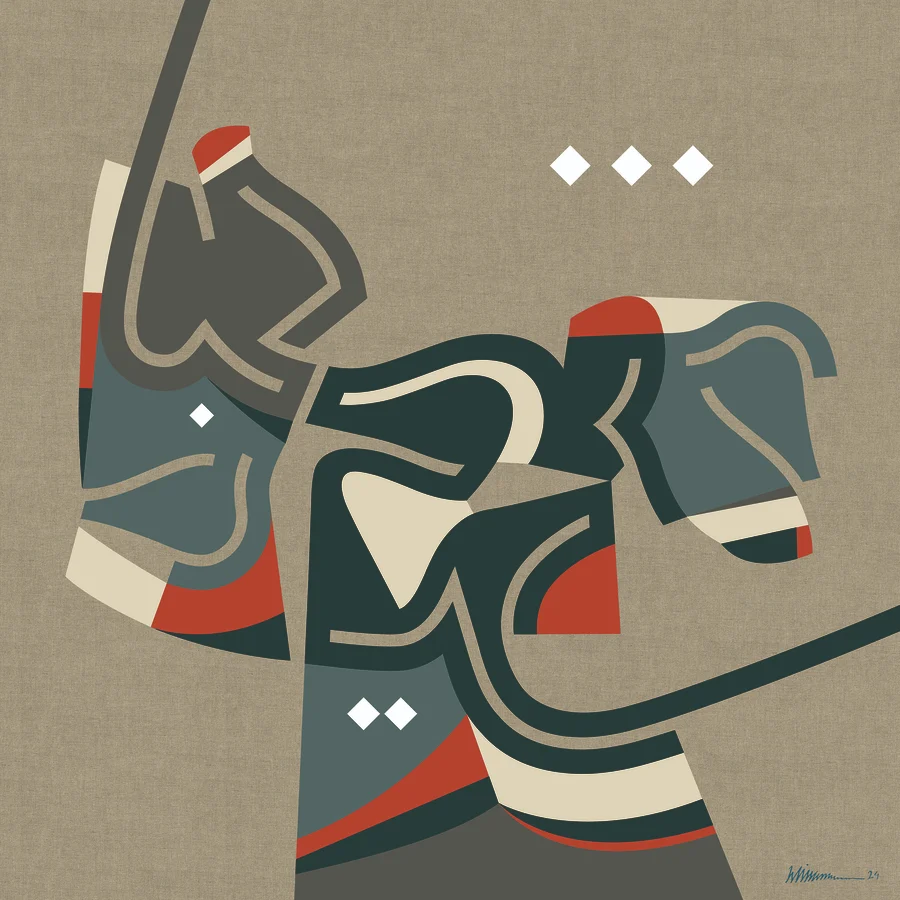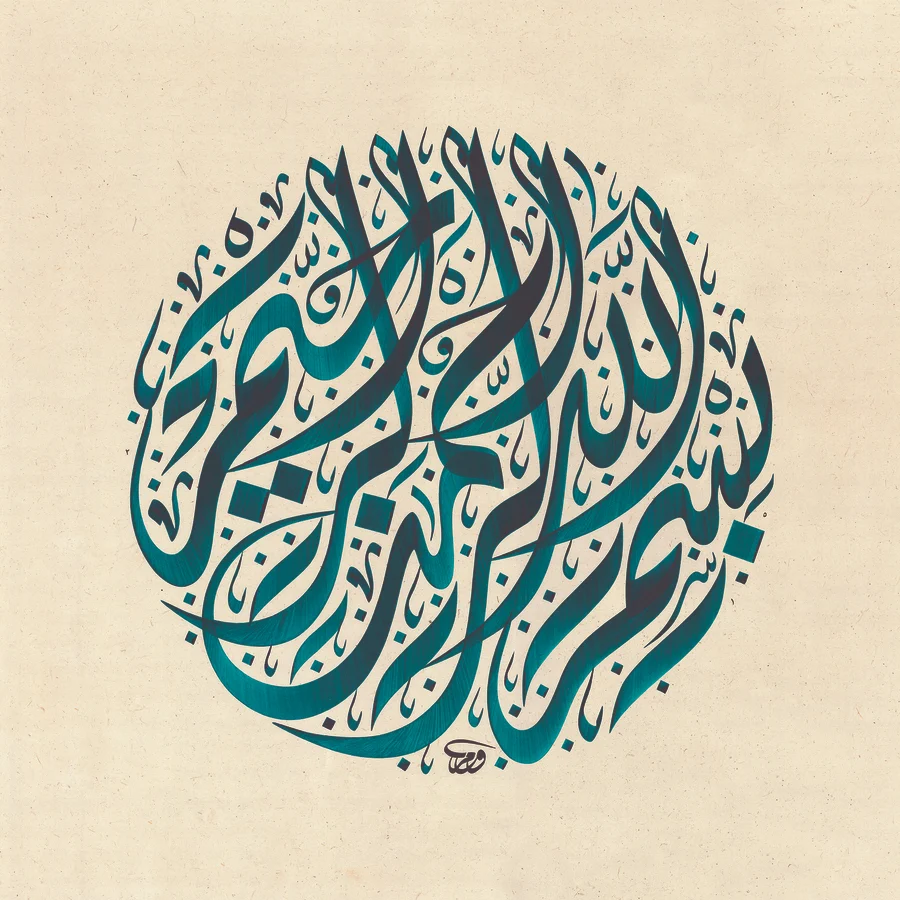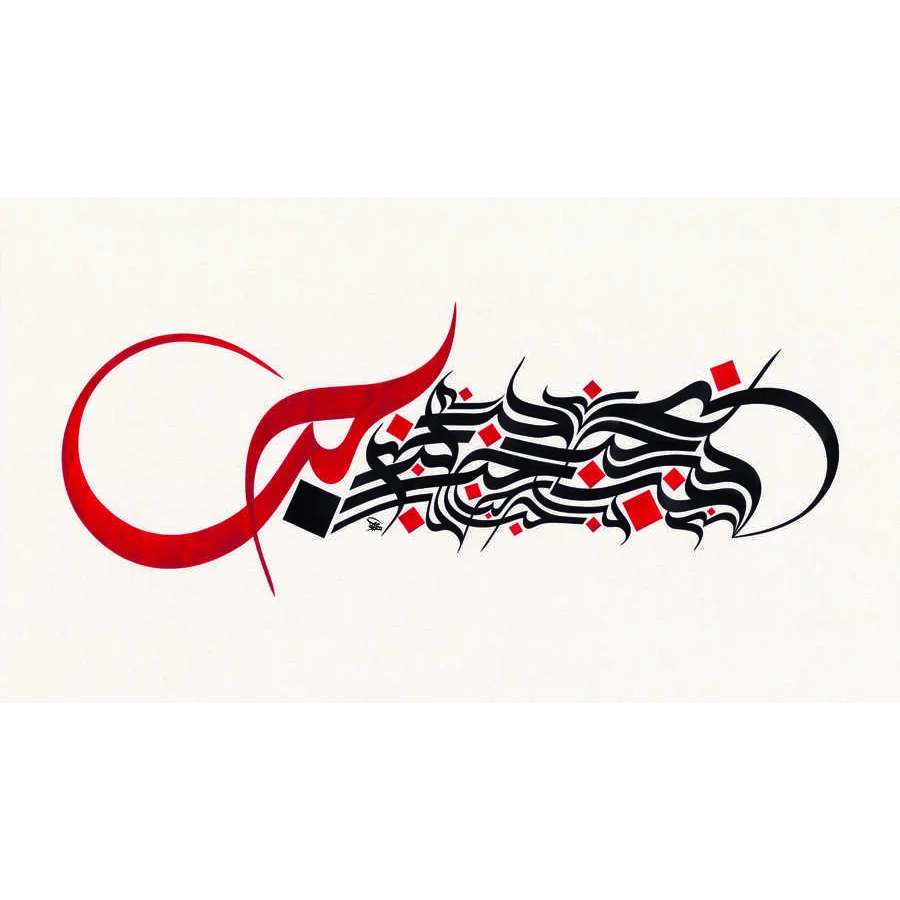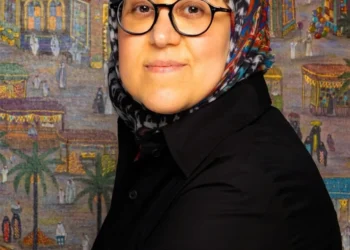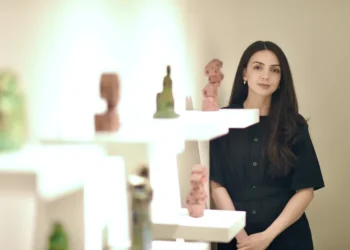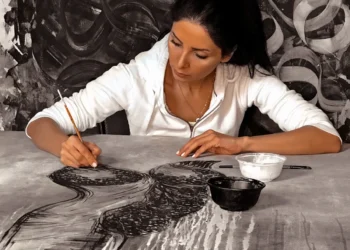WHEN DID YOUR JOURNEY WITH ARABIC CALLIGRAPHY BEGIN?
I fell in love with calligraphy in 1984, during an art class at school. Our teacher, Mohammed Redha Suhail, decided one day to teach us calligraphy instead of drawing. I was 10 years old at the time. Most of us used to draw war scenes like tanks, planes, bombardments because we were living through the Iraq-Iran war. That day, he introduced the Ruqaa style, and I was immediately captivated. I found it amazing how even simple letterforms could be so elegant. That moment sparked my lifelong obsession. Later that same year, my father bought my older brother a calligraphy book by Hashim Mohammed Al-Khattat and a pen. My brother wasn’t interested, so he gave them to me. Around that time, the situation in Basra worsened, and we had to take shelter underground. I brought the book and pen with me and started practicing while we were in hiding. I couldn’t wait for things to calm down so I could go back and ask my teacher about the letters. In 1987, we moved to Mosul. I enrolled in a one-month calligraphy course and graduated with excellence. After the war ended in 1988, we returned to Basra. I kept practicing and even worked in a sign shop during the summer to gain hands- on experience and earn money for tools. I was involved in calligraphy and design throughout my teen years by lettering for friends and decorating my skateboard. I studied civil engineering later on, and my favorite subject was engineering drawing. I held two exhibitions during university. After graduating, I joined the army, where I continued calligraphy work, often at the request of my superiors. In 1998, I was invited to the Baghdad International Calligraphy Festival. I won an award, and that changed everything. I had worked briefly as an engineer, but I didn’t enjoy it. That award affirmed my path. I chose to dedicate myself fully to calligraphy.
CAN YOU TELL US ABOUT YOUR EXHIBITIONS?
My first serious exhibition was in 1989. I was the only participant from my city in a local Iraqi show, and I traveled by train to Baghdad, where I won an award. In 1996, I took part in another exhibition in Basra and won a main prize. In 1999, I participated in an international show in Italy. That same year, I was invited to the Sharjah Art Museum’s annual show, and in 2002, they acquired one of my works. I moved to Dubai in 2002 and have been based here since. I’ve participated in almost every major calligraphy exhibition in Sharjah, Dubai, and the wider region. I’ve served as an organizer, exhibitor, and judge. In 2010, I held a show in Damascus where I introduced what became known as the Al Wissam style. Between 2003 and 2014, I was actively involved in the Dubai International Calligraphy Exhibition, which I co-founded. In 2011, I had a solo show in Manhattan titled Letters of Love, followed by Letters of Love II in 2022. In 2015, I showcased abstract work at Tashkeel, then followed up with Inside Outside (2017), Disciplined Insurgence (2019), Back to Basics (2021), Black and White (2023), and Calligraphy ISM (2024). I’m currently preparing a new show for this year.
HOW HAS YOUR CALLIGRAPHY BACKGROUND INFLUENCED YOUR DESIGN WORK WITH MAJOR BRANDS?
I believe anyone working with Arabic letters, whether in typography or branding, needs a deep understanding of calligraphy. My training helped me offer authentic Arabic designs for brands like Chopard and Tiffany & Co., instead of just imitating Latin letters. When I moved to the UAE, Arabic logo design often involved modifying Latin letters to look Arabic, which stripped away the beauty and proportion of true Arabic script. I wanted to change that. That’s how the Wissam script began, initially for logo design, but it grew into something much bigger.
WHAT ARE YOUR THOUGHTS ON HOW ARABIC CALLIGRAPHY IS POSITIONED IN THE GLOBAL ART WORLD?
Arabic calligraphy is often left out of international art fairs, perhaps because some artists only reproduce historical styles. From the start, I wanted to introduce artistic expression into calligraphy. That drive led to my abstract work Calligraformism, which uses classical shapes with a contemporary aesthetic. International audiences connected with this style, especially when the language barrier was removed. Collaborating with brands like Rolex and Hermès has helped elevate Arabic calligraphy. These partnerships allow me to show its versatility while experimenting with modern applications of the craft. I’ve tried experimenting with AI-generated calligraphy, but the results lack composition and soul. Calligraphy is deeply personal, and AI doesn’t yet understand the nuances of how Arabic letters connect and flow.
WHAT DO YOU THINK LIES AHEAD FOR ARABIC CALLIGRAPHY?
The future is bright. Technology has made tools, books, and global networks more accessible. More people are practicing now than ever before. While I’m not a fan of online learning for calligraphy, I recognize that tutorials and videos have helped spread awareness and education. I was deeply influenced by Iraqi masters who pushed the boundaries of the tradition. Although my work is considered modern, it’s always rooted in classical calligraphy. I believe that to break the rules, you must first master them. Over the past 23 years, I’ve taught calligraphy in various formats, privately, in workshops, and at institutions like Virginia Commonwealth University in Doha and NYU Abu Dhabi. I also gave workshops in Chicago and New York on my modern style, Calligraforms. It’s been rewarding to see how these sessions inspire others.
WHAT ADVICE WOULD YOU GIVE TO ASPIRING CALLIGRAPHERS TODAY?
Patience is everything. Calligraphy isn’t something you master in a few months. It’s a lifelong process. Many people today rush to produce without discipline, but the true essence of calligraphy lies in refinement, commitment, and a deep respect for tradition.




























